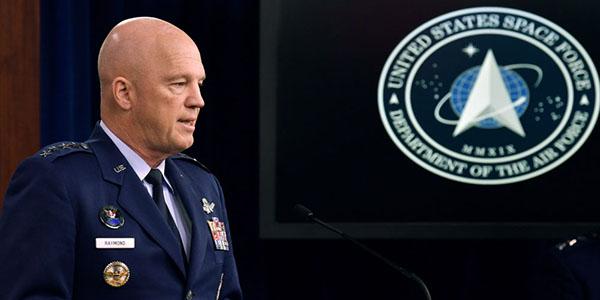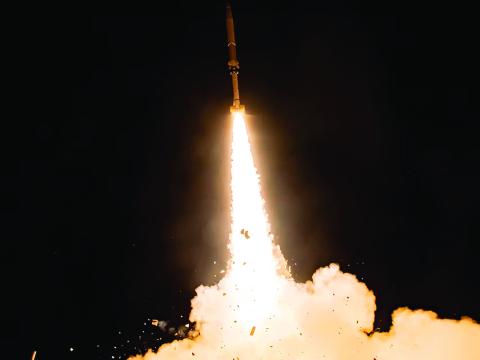Adding the Force to the Space Force
The U.S. Space Force is beginning to take shape. The new service is in the process of sorting out who moves to the Space Force and who will stay in the U.S. Air Force. The four-month-old service also will begin taking applicants to join its ranks from the other military services starting May 1, Gen. John “Jay” Raymond, USAF, chief of operations, U.S. Space Force, said in a virtual town hall on April 16. Any individual that wants to come over to the service has to get prior approval from its current service, he noted.
Over the last few months, Gen. Raymond and other leaders have traveled the country conducting roadshows to relay the service’s mission, vision and joint warfighting strategy, as well as details on how it would be developing.
The COVID-19 virus pandemic has certainly complicated their communication efforts, the general said, especially in regard to the May 30 deadline for airmen to voluntarily decide whether or not to stay in the Air Force. The general, along with Chief Master Sgt. Roger Towberman, USAF, senior enlisted advisor, U.S. Space Force, conducted the town hall virtually in an effort to continue the dialogue and answer pressing questions about joining the force.
“I understand that it is a life-changing decision,” Chief Towberman stated. “If you just aren’t sure, I want you to understand that we have a service to plan for, and we can’t do any of the normal planning that any service needs to do if we don’t know how many people are in or aren’t in….And we are ready to make a commitment to you.”
The chief master sergeant added that he too had to make the decision of whether or not to leave the Air Force, but ultimately said that he would prefer to continue the space-related work as part of the Space Force. “I’ve been an airman for a long time,” he said. “It is a little bit of wonder but a lot of excitement [to join the Space Force], but I work with great teammates and I want to finish what we started.”
The Defense Department stood up the Space Force on December 20 to be the complimentary entity that organizes, trains and equips personnel needed to support warfighting in space, which is now conducted by the U.S. Space Command.
The distinction between the warfighting elements of the military versus the efforts to organize, train and equip warfighters, which originally came about in the 1980s with the Goldwater-Nicolls Act that split the Defense Department into two functions, now carries through to the Space Force, Gen. Raymond stated.
“Last August 29th, DOD chose to elevate the warfighting efforts of the U.S. military in space, by shifting Air Force Space Command to become U.S. Space Command,” the general said. The move made Space Command the 11th Combatant Command.
Space Force must now adapt to the demands of the Combatant Command, given the increasingly contested nature in space by adversaries. “Our space domain has changed significantly since I’ve been in this business over 30 years,” he stated. “We are making a shift to be able to organize, train and equip for a space domain that is contested.”
Gen. Raymond outlined three categories of personnel and which fields the Space Force would be looking to fill voluntarily. The first group is space operators, the officers and enlisted personnel that are trained to operate U.S. space capabilities. The vast majority of those space operator positions will transfer off of the books of the Air Force and into the Space Force, the general said. The operators must voluntarily choose to move to Space Force though, he said.
A second group—security forces, lawyers, civil engineers, doctors—the support segment of personnel will not transition over to the Space Force; they will remain in the Air Force. They will, however, continue to provide support to Space Force. “We are going to rely very heavily on the Air Force to provide those support pieces, while we really focus on our space mission,” Gen. Raymond clarified.
The third group, consisting of acquisition professionals, cyber experts, intelligence officials, and engineers, would be shared between the two services. Some will come over to Space Force, and some will not. “Those are the three big bins that we are working through as we begin to transfer folks from the U.S. Air Force to the Space force,” said Gen. Raymond.
The National Defense Authorization Act of 2019—which created the Space Force—also tasked the service to review how the Force would utilize a reserve and guard component. “We rely on them heavily,” Gen. Raymond said. “We are doing that study right now.”
In addition, on Saturday, when the U.S. Air Force Academy hosts its graduation—live-streamed, given that an in-person audience is not feasible with the pandemic—86 cadets will commission directly into the Space Force, the general reported. “We are really excited to get those cadets on our team,” he said.





Comments